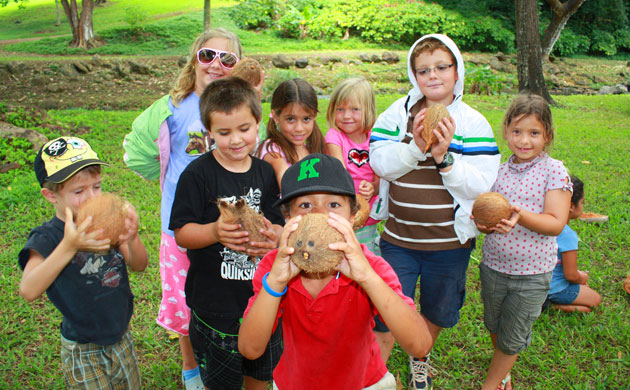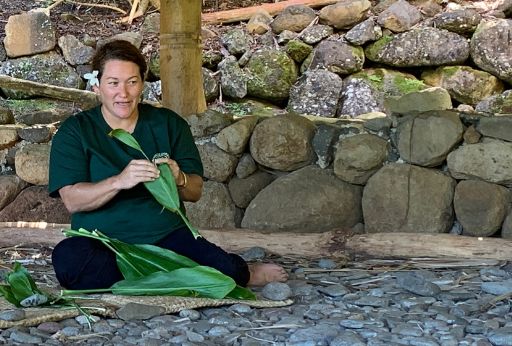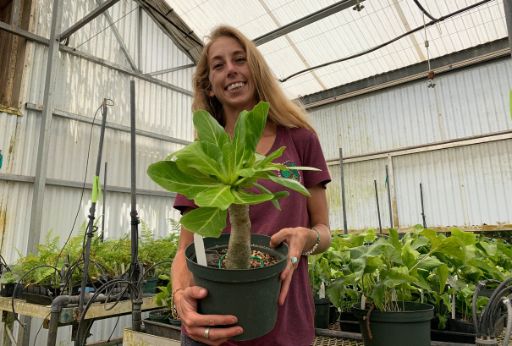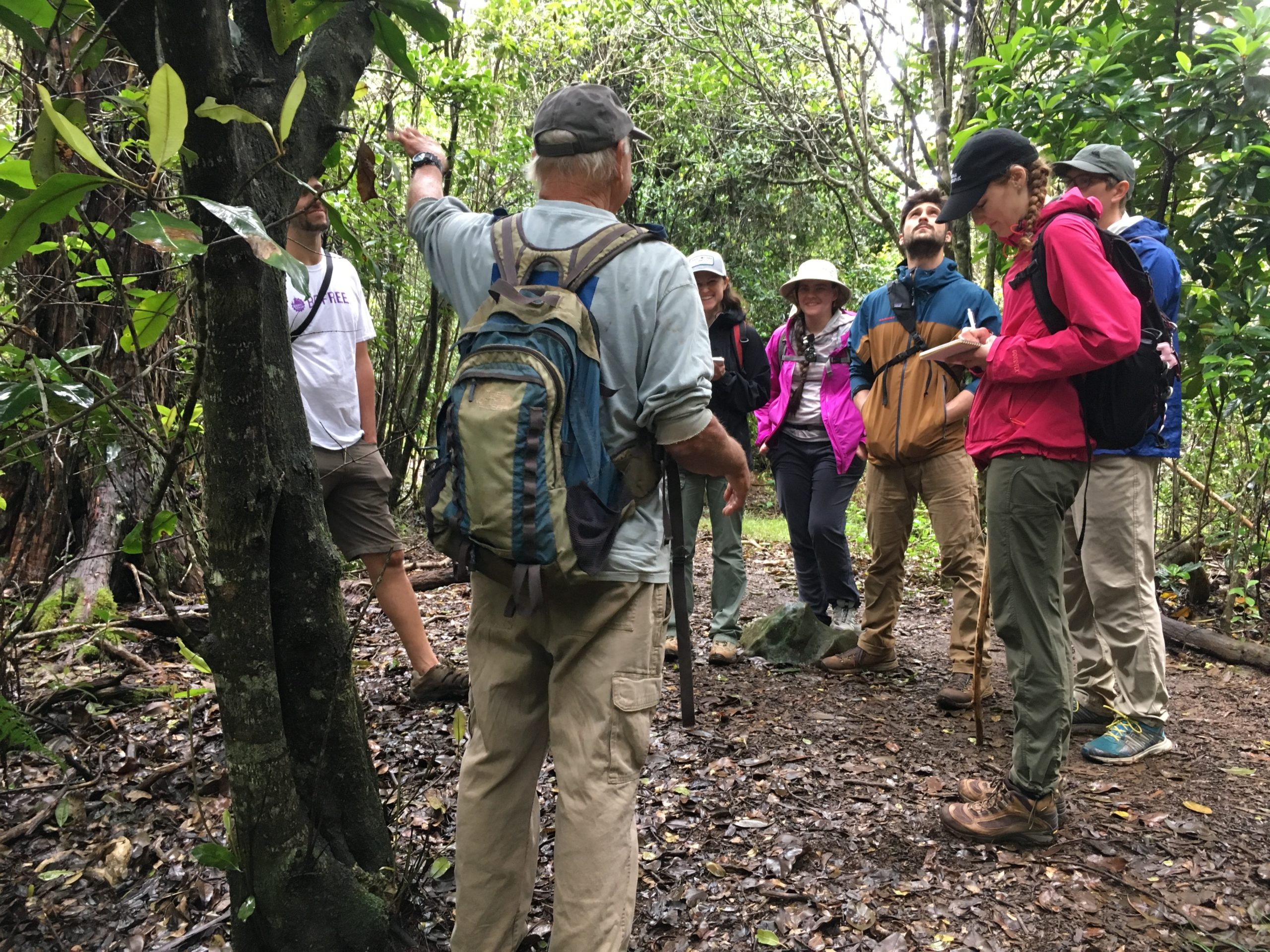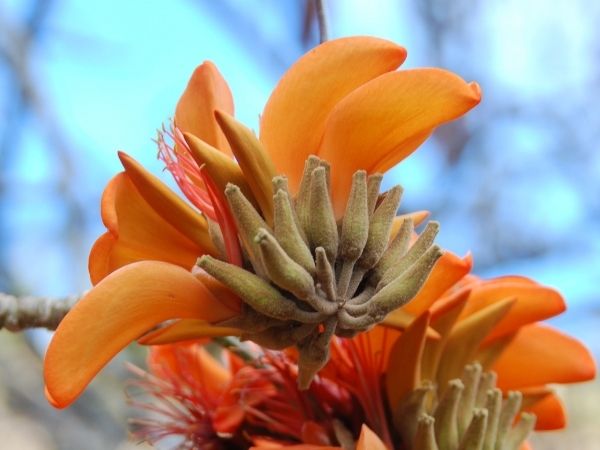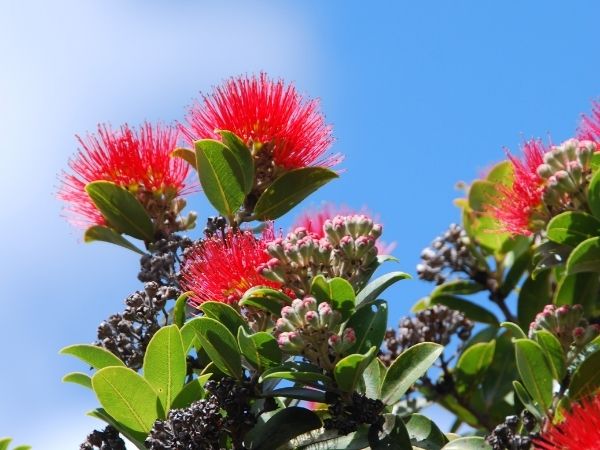Tropical Plant Database - Plant Details
Sesbania tomentosa
Click on any heading above to view more information about this plant
Conservation Status
- IUCN: Not Evaluated
- USFWS: Endangered
- Listed with CPC
Family: FABACEAE
Genus: Sesbania
Species: tomentosa
Species Author: Hook. & Arn.
Vernacular: Ohai
Synonyms: Sesbania arborea, Sesbania hawaiiensis, Sesbania hobdyi, Sesbania molokaiensis, Sesbania tomentosa f. arborea, Sesbania tomentosa var. molokaiensis
Genus: Sesbania
Species: tomentosa
Species Author: Hook. & Arn.
Vernacular: Ohai
Synonyms: Sesbania arborea, Sesbania hawaiiensis, Sesbania hobdyi, Sesbania molokaiensis, Sesbania tomentosa f. arborea, Sesbania tomentosa var. molokaiensis
Sesbania tomentosa (Fabaceae)
Synonyms:
Sesbania arborea
S. hawaiiensis
S. hobydi
S. molokaiensis
S. tomentosa f. arborea
S. tomentosa var. molokaiensis
Common Names:
`Ohai
Classification:
Kingdom: Plantae-Plants
Subkingdom: Tracheobionta-Vascular plants
Superdivision: Spermatophyta-Seed plants
Division; Magnoliophyta-Flowering plants
Subclass: Rosidae
Order: Fabales
Family: Fabaceae – Pea family
Genus: Sesbania Scop. - Riverhemp
Species: Sesbania tomentosa Hook. & Arnott - Oahu Riverhemp
(USDA, NRCS. 2006. The PLANTS Database, 6 March 2006 (http://plants.usda.gov). Data compiled from various sources by Mark W. Skinner. National Plant Data Center, Baton Rouge, LA 70874-4490 USA.)
(Wagner, W. L., Herbst, D. R., and S. H. Sohmer. 1999. Manual of the Flowering Plants of Hawai`i. Revised Edition. Volume 1. Bishop Museum Special Publication 97. University of Hawai`i Press, Bishop Museum Press, Honolulu, Hawai`i.)
Synonyms:
Sesbania arborea
S. hawaiiensis
S. hobydi
S. molokaiensis
S. tomentosa f. arborea
S. tomentosa var. molokaiensis
Common Names:
`Ohai
Classification:
Kingdom: Plantae-Plants
Subkingdom: Tracheobionta-Vascular plants
Superdivision: Spermatophyta-Seed plants
Division; Magnoliophyta-Flowering plants
Subclass: Rosidae
Order: Fabales
Family: Fabaceae – Pea family
Genus: Sesbania Scop. - Riverhemp
Species: Sesbania tomentosa Hook. & Arnott - Oahu Riverhemp
(USDA, NRCS. 2006. The PLANTS Database, 6 March 2006 (http://plants.usda.gov). Data compiled from various sources by Mark W. Skinner. National Plant Data Center, Baton Rouge, LA 70874-4490 USA.)
(Wagner, W. L., Herbst, D. R., and S. H. Sohmer. 1999. Manual of the Flowering Plants of Hawai`i. Revised Edition. Volume 1. Bishop Museum Special Publication 97. University of Hawai`i Press, Bishop Museum Press, Honolulu, Hawai`i.)
Conservation efforts have focused on addressing the identified threats to persistence of Sesbania tomentosa populations. On O'ahu, rock barriers were constructed to protect individuals from off-road vehicle traffic. Fences have been erected to eliminate the effects of grazing and seed predation by deer and rats. Control of rodents within these populations has allowed for natural seedling germination and increased rates of seedling survival. Weed removal is also carried out to decrease competition for resources by introduced species. Out-planting of plants into suitable habitat is being carried out to establish additional `Ohai populations.
(USFWS. 1999. Recovery Plan for Multi-Island Plants. Portland, Oregon: U.S. Fish and Wildlife Service.)
(USFWS. 1999. Recovery Plan for Multi-Island Plants. Portland, Oregon: U.S. Fish and Wildlife Service.)
The flowers and seeds are used in crafting beautiful Hawaiian leis.
The large striking flowers of `Ohai in a range of colors makes this species suitable for ornamental use, particularly in coastal gardens that are exposed to trade winds, sea spray and intense sunlight as it is tolerant of all these environmental conditions. In cultivation `Ohai is, however, susceptible to seed predation by an introduced weevil species and mortality through root nematodes.
(McDonald, M. A. 1989. Ka Lei; the leis of Hawaii. Ku Pa`a and Press Pacifica, Honolulu, HI.)
(Staples, G. W. and D. R. Herbst. 2005. A Tropical Garden Flora: Plants cultivated in the Hawaiian Islands and other tropical places. Bishop Museum Press, Honolulu, Hawai`i.)
The large striking flowers of `Ohai in a range of colors makes this species suitable for ornamental use, particularly in coastal gardens that are exposed to trade winds, sea spray and intense sunlight as it is tolerant of all these environmental conditions. In cultivation `Ohai is, however, susceptible to seed predation by an introduced weevil species and mortality through root nematodes.
(McDonald, M. A. 1989. Ka Lei; the leis of Hawaii. Ku Pa`a and Press Pacifica, Honolulu, HI.)
(Staples, G. W. and D. R. Herbst. 2005. A Tropical Garden Flora: Plants cultivated in the Hawaiian Islands and other tropical places. Bishop Museum Press, Honolulu, Hawai`i.)
`Ohai is found in small populations in coastal strand vegetation, soil pockets on lava flows, and on pond margins on the main Hawaiian Islands and on Necker and Nihoa in the Northwestern Hawaiian Islands at elevations between 0 and 540m. This species was once widespread in low elevation, dry habitats on all of the main Hawaiian Islands, however, conversion of lowland habitats for human use has removed large patches of suitable habitat and resulted in the loss of a large number of `Ohai populations.
Populations on Nihoa and Necker are in the Hawaii Island National Wildlife Refuge, a population on Kaho'olawe is on a state-owned seabird sanctuary, and on Hawai`i populations are found in Hawai`i Volcanoes National Park in addition to state and private land. Single populations are known from Kaua`i and O'ahu both of which are within state owned land. On Moloka`i and Maui populations are on both state and private land and, on Maui, on a National Guard training area. Two populations of Sesbania tomentosa on Lanai were last seen in the mid-1950s.
(USFWS. 1999. Recovery Plan for Multi-Island Plants. Portland, Oregon: U.S. Fish and Wildlife Service.)
Populations on Nihoa and Necker are in the Hawaii Island National Wildlife Refuge, a population on Kaho'olawe is on a state-owned seabird sanctuary, and on Hawai`i populations are found in Hawai`i Volcanoes National Park in addition to state and private land. Single populations are known from Kaua`i and O'ahu both of which are within state owned land. On Moloka`i and Maui populations are on both state and private land and, on Maui, on a National Guard training area. Two populations of Sesbania tomentosa on Lanai were last seen in the mid-1950s.
(USFWS. 1999. Recovery Plan for Multi-Island Plants. Portland, Oregon: U.S. Fish and Wildlife Service.)
Pollination of `Ohai flowers is carried out by native bees (Hylaeus species). Low population numbers may limit the effectiveness of these native bees as pollinators on the island of Oahu.
Threats to the persistence of Sesbania tomentosa include competition with introduced plants, grazing and trampling by introduced mammals, loss of habitat, natural disturbance including increased fire events, and human disturbance. Introduced grazing animals in Hawai`i including the axis deer (Axis axis; Cervidae), goats (Capra hircus; Bovidae), and cattle (Bos taurus; Bovidae) are a considerable threat to `Ohai populations as they trample and consuming young individuals. Seed predation by rats, such as the Ship rat (Rattus rattus; Muridae) and removal of the bark from older plants also reduces plant survival and population persistence. Introduced plants that invade Sesbania tomentosa habitat include Molasses grass (Melinis minutiflora: Poaceae), Buffelgrass (Cenchrus ciliaris; Poaceae), Kiawe (Prosopis pallida; Fabaceae) and Koa haole (Leucaena leucocephala; Fabaceae). The establishment of these introduced plants reduces germination of `Ohai seeds and may increase the risk of fire further increasing the potential for invasion by non-native species.
(Hopper, D. 2002. The reproductive biology and conservation of the endangered Hawaiian legume Sesbania tomentosa, with emphasis on its pollination system. University of Hawaii at Manoa. Honolulu, HI.)
(USFWS. 1999. Recovery Plan for Multi-Island Plants. Portland, Oregon: U.S. Fish and Wildlife Service.)
Threats to the persistence of Sesbania tomentosa include competition with introduced plants, grazing and trampling by introduced mammals, loss of habitat, natural disturbance including increased fire events, and human disturbance. Introduced grazing animals in Hawai`i including the axis deer (Axis axis; Cervidae), goats (Capra hircus; Bovidae), and cattle (Bos taurus; Bovidae) are a considerable threat to `Ohai populations as they trample and consuming young individuals. Seed predation by rats, such as the Ship rat (Rattus rattus; Muridae) and removal of the bark from older plants also reduces plant survival and population persistence. Introduced plants that invade Sesbania tomentosa habitat include Molasses grass (Melinis minutiflora: Poaceae), Buffelgrass (Cenchrus ciliaris; Poaceae), Kiawe (Prosopis pallida; Fabaceae) and Koa haole (Leucaena leucocephala; Fabaceae). The establishment of these introduced plants reduces germination of `Ohai seeds and may increase the risk of fire further increasing the potential for invasion by non-native species.
(Hopper, D. 2002. The reproductive biology and conservation of the endangered Hawaiian legume Sesbania tomentosa, with emphasis on its pollination system. University of Hawaii at Manoa. Honolulu, HI.)
(USFWS. 1999. Recovery Plan for Multi-Island Plants. Portland, Oregon: U.S. Fish and Wildlife Service.)
The Latin species name tomentosa means woolly in reference to the long hairs present on the stems and leaves of this plant. Sesbania fruit does not always split open to release the mature seeds and when the pod is dry the seeds can be heard rattling when the pod is shaken. This is the basis for the common name rattlepod which is applied to many of the non-native Sesbania species including the Egyptian rattlepod (Sesbania sesban) that is introduced in Hawai`i.
Sesbania tomentosa is the only endemic Hawaiian species in the genus and is currently listed as endangered under the US Endangered Species Act. The designation of critical habitat provides some protection for existing `Ohai populations. Twenty-seven populations have been identified on federal, state, and private land that are estimated to contain a total of 4,000-5,000 individuals.
(USFWS. 1999. Recovery Plan for Multi-Island Plants. Portland, Oregon: U.S. Fish and Wildlife Service.)
(USFWS. 1999. Recovery Plan for Multi-Island Plants. Portland, Oregon: U.S. Fish and Wildlife Service.)
- 065567 - collected by J. Remy in 1851
- 010462 - collected by Steven P. Darwin in 1975
- 010461 - collected by Tim Flynn in 1983
- 010459 - collected by Tim Flynn in 1983
- 009825 - collected by Steve Perlman in 1987
- 018588 - collected by Steve Perlman in 1987
- 010460 - collected by Tim Flynn in 1989
- Unassigned - collected by Tim Flynn in 1991
- 019604 - collected by K. R. Wood in 1991
- S047674 - collected by C. Rowland in 1991
- 033468 - collected by T. A. Ranker in 1992
- 013719 - collected by Steve Perlman in 1992
- 015903 - collected by K. R. Wood in 1994
- S047675 - collected by Chrissen Gemmil in 1994
- S047676 - collected by Steve Perlman in 1994
- S047831 - collected by K. R. Wood in 1995
- 040017 - collected by K. R. Wood in 1996
- 040018 - collected by K. R. Wood in 1996
- 040009 - collected by K. R. Wood in 1996
- 021576 - collected by Steve Perlman in 1996
- 089586 - collected by Art Whistler in 1998
- S047677 - collected by Steve Perlman in 1998
- 033179 - collected by K. R. Wood in 1999
- 047807 - collected by K. R. Wood in 1999
- Unassigned - collected by K. R. Wood in 2000
- 052231 - collected by K. R. Wood in 2002
- 070858 - collected by M. LeGrande in 2003
- 045811 - collected by Steve Perlman in 2004
- 056474 - collected by Natalia Tangalin in 2006
- 054138 - collected by Hank Oppenheimer in 2007
- 047757 - collected by Steve Perlman in 2007
- 047315 - collected by K. R. Wood in 2008
- 053885 - collected by K. R. Wood in 2008
- 064546 - collected by K. R. Wood in 2009
- S064723 - collected by K. R. Wood in 2009
- 051509 - collected by K. R. Wood in 2010
- 059488 - collected by K. R. Wood in 2011
- 059349 - collected by K. R. Wood in 2011
- 065222 - collected by Nicole Shores in 2012
- 080239 - collected by K. R. Wood in 2013
- 074869 - collected by Hank Oppenheimer in 2016
- 083507 - collected by Seana Walsh in 2020
- 086209 - collected by Dustin Wolkis in 2021
- 095924 - collected by Dustin Wolkis in 2024
- 095168 - collected by Dustin Wolkis in 2024
We currently have 45 herbarium specimens for Sesbania tomentosa in our collection. Click on any specimen below to view the herbarium sheet data.
.svg)


